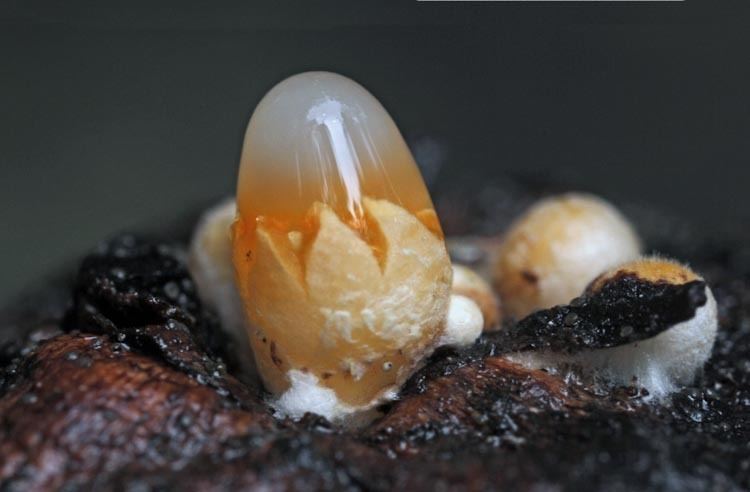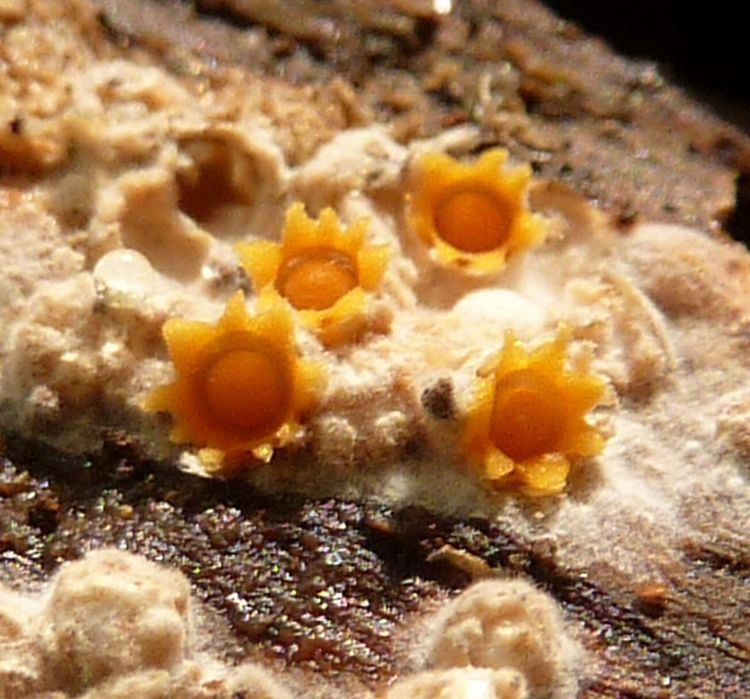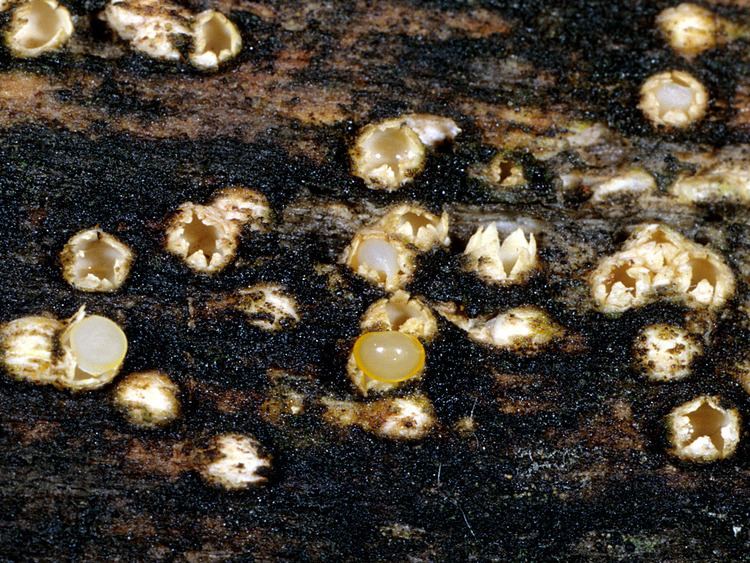Kingdom Fungi Phylum Basidiomycota | Family Geastraceae Rank Genus | |
 | ||
Similar Sphaerobolus stellatus, Crucibulum, Cyathus, Nidularia, Terana caerulea | ||
Sphaerobolus stellatus wmv
Sphaerobolus is a genus of fungi in the family Geastraceae. Commonly known as the "cannonball fungi", species discharge their spores with explosive force. Discharged spore sacs are sticky and have a tendency to strongly adhere to whatever surface they encounter, making them a nuisance to homeowners, pressure washing contractors, landscape mulch producers and insurance companies.
Contents
- Sphaerobolus stellatus wmv
- Fast plants sphaerobolus stellatus
- Taxonomy and classification
- Description
- Mechanism of spore discharge
- Species
- References

Fast plants sphaerobolus stellatus
Taxonomy and classification

The generic name is derived from the Greek words sphaer, meaning "sphere", and obolus, meaning "to throw". Sphaerobolus was first described by the Italian priest and biologist Pier Antonio Micheli (as Carpobolus) in 1729. Formerly, the genus was formerly placed either in its own family, the Sphaerobolaceae, in the order Sclerodermatales, or, more commonly, in the order Nidulariales. Currently, the genus is placed in the family Geastraceae.

Recent phylogenetic analysis suggests that Sphaerobolus should be placed in the gomphoid-phalloid clade along with related genera like Geastrum, Phallus, Pseudocolus, Ramaria, Clavariadelphus, Gomphus and Gautieria. Within the genus, three highly supported clades may be discerned, corresponding to S. stellatus, S. iowensis, and the recently described taxon S. ingoldii.
Description

Fruiting bodies, which grow in groups, are 1–3 mm in diameter, roughly spherical or ovoid in shape, and white to buff in color. The peridium (outer wall) consists of several layers, including a gelatinous layer. At maturity, the exoperidium (outermost layer) splits into several lobes to expose the dark brown, single peridiole (spore casing). The peridiole is forcibly ejected (sometimes up to several feet), leaving an evaginated endoperidium. Spores are typically 6–10 x 4–6 µm, elliptical to oblong in shape, thick-walled, and hyaline. Species have a cosmopolitan distribution, and are usually found on dung, decaying wood (such as landscaping mulch), or vegetative litter.
Mechanism of spore discharge

The peridium, which consists of six distinct layers, forms two "cups" at maturity. Three layers form the outer cup, two form the inner cup, and one layer dissolves to create the fluid that bathes the gleba. After splitting of the peridal layers to expose the gleba, enzymatic conversion of glycogen to glucose increases the internal osmotic pressure and the turgidity of palisade cells in the inner peridial cup. Analysis of the glebal carbohydrates revealed an increase in glucose, mannitol, and trehalose prior to glebal discharge, which would account for the increase in osmotic pressure. Glebal discharge typically occurs 5–6 hours after the apex has split. In S. stellatus, the gleba may be thrown up to 6 meters horizontally. This species is phototropic, and the nearest source of direct or reflected light will be the target for glebal discharge.
